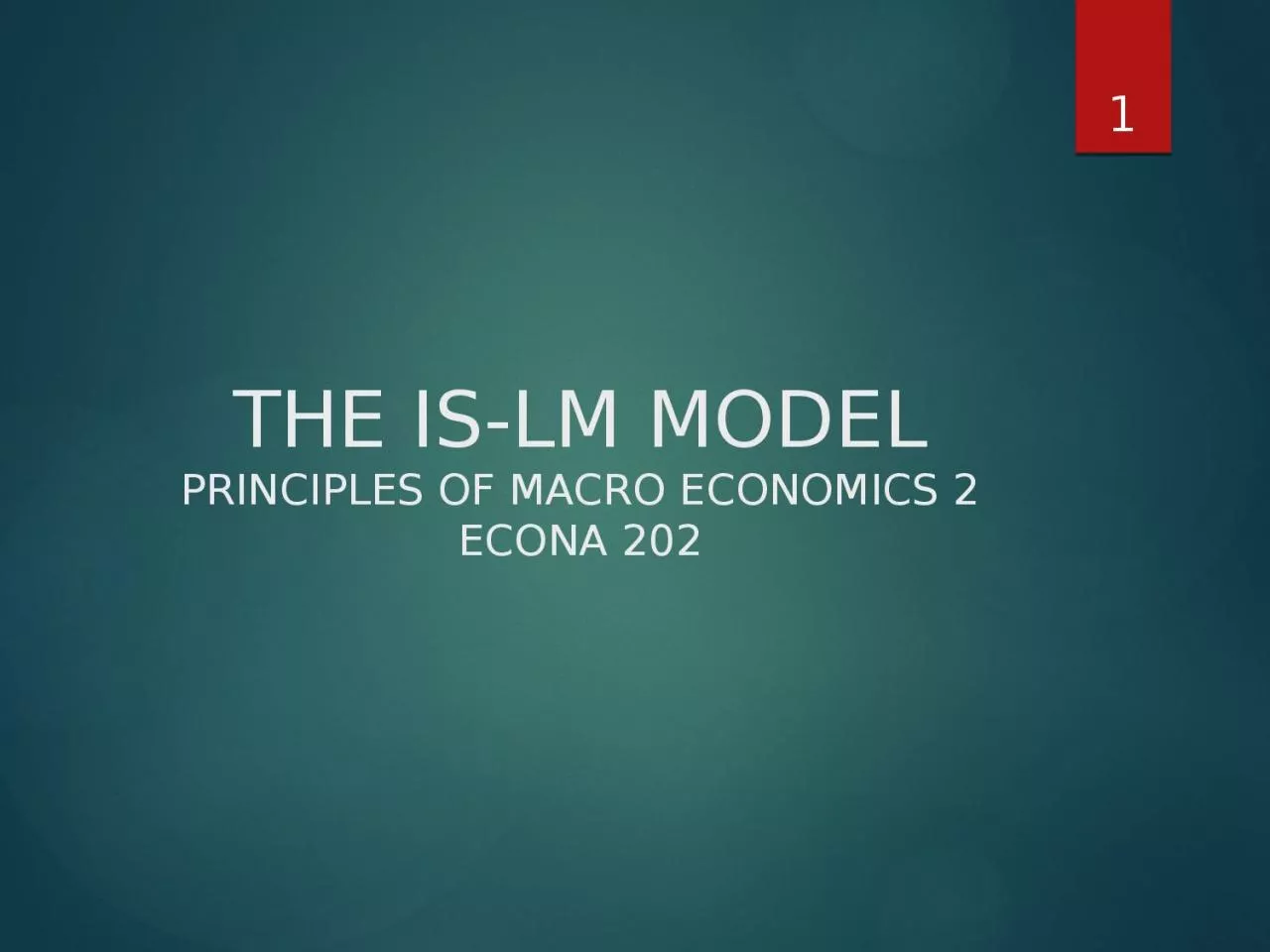

ECONA 202 1 The origin of the ISLM model The ISLM model was developed in 1937 by Nobel laureate Sir John Hicks who intended to interpret the ideas of Keynes in the book The General Theory of Employment Interest and Money by graphs ID: 1027925
Download Presentation The PPT/PDF document "THE IS-LM MODEL PRINCIPLES OF MACRO ECON..." is the property of its rightful owner. Permission is granted to download and print the materials on this web site for personal, non-commercial use only, and to display it on your personal computer provided you do not modify the materials and that you retain all copyright notices contained in the materials. By downloading content from our website, you accept the terms of this agreement.
1. THE IS-LM MODELPRINCIPLES OF MACRO ECONOMICS 2ECONA 2021
2. The origin of the IS-LM modelThe IS-LM model was developed in 1937 by Nobel laureate Sir John Hicks, who intended to interpret the ideas of Keynes in the book, The General Theory of Employment, Interest, and Money, by graphs.2
3. The meaning of the IS-LM modelThe IS-LM model represents the simultaneous equilibrium of the goods and services market and the asset market. I represents investment, S represents saving, L represents real money demand, and M represents money supply. During equilibrium, I=S, L=M.3
4. The IS-LM modelThis model uses graphs on the coordinates of the real interest rate, r, and the real income, Y, to represent the combinations of the real interest rate and the real income that give rise to the equilibria in the goods market (the IS curve) and in the asset market (the LM curve). 4
5. The IS curveThe IS curve represents all the combinations of the real interest rate and the real income that equate the demand for goods and services and the supply of goods and services ( the equilibrium of goods and services market), given other things being equal. ( in a closed economy) 5
6. The IS curveThe goods market equilibrium can be expressed asNational saving equals total domestic investment.6
7. 7rIS curve
8. The slope of the IS curveWhen the real income is increased, the national saving curve will move to the right. In order to restore the equilibrium in the goods market, the real interest rate must fall to stimulate the investment.The IS curve is a downward slopping curve. (negative slope)8
9. Factors that shift the IS curveGiven the real income level, any factor that will make the equilibrium real interest rate to rise (fall) will shift the IS curve to the right (left).9
10. Factors that shift the IS curveExpected future marginal product of capitalEffective tax rate on capitalGovernment investmentExpected future outputWealthGovernment consumptionTaxes.10
11. The LM curve The LM curve represents all the combinations of the real interest rate and the real income that equate the demand for real money and the supply of real money ( the equilibrium of the money market), given other things being equal.11
12. 12LM curve
13. The slope of the LM curveWhen the real income level increases, the real money demand will increase too. Given the real money supply, the equilibrium real interest rate will rise.The LM curve is an upward slopping curve ( positive slope). 13
14. Factors that shift the LM curveGiven the real income level, any factor that will make the equilibrium real interest rate to rise (fall) will shift the LM curve to the left (right).14
15. Factors that shift the LM curveNominal money supplyThe price levelWealthNominal interest rate on nonmoney assetsExpected inflationRelative risk of nonmoney assets to money assets.Relative liquidity of nonmoney assets to money assets.15
16. The IS-LM modelWe can put the IS curve and the LM curve together to determine the aggregate demand for goods and services, given the price level.For a fixed price level, the intersection of the IS and the LM curves determines the equilibrium real income of an economy in the short run. 16
17. 17IS curveLM curve